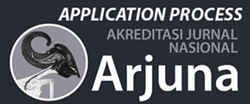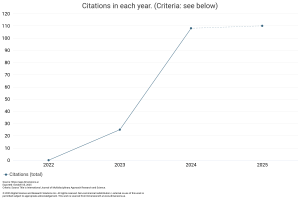Role of Sociolinguistics in Shaping Students’ Language Use in Multilingual Classrooms
DOI:
https://doi.org/10.59653/ijmars.v3i03.1901Keywords:
students, sociolinguistics, multilingual, classroomAbstract
With an emphasis on how social and cultural elements impact communication, identity, and interaction, this study investigates how sociolinguistics shapes students' language use in multilingual classrooms. Students frequently switch between local, national, and international languages like English in multilingual educational settings, leading to intricate linguistic patterns. Using a qualitative design, the study examined how sociolinguistic dynamics emerge through teacher and student interviews and classroom observations in regular learning interactions. The results show that various factors, including peer pressure, instructors' language preferences, and the sociocultural status of particular languages, influence how students use language. Interviews revealed, for example, that students frequently transition between Indonesian, English, and their native tongues based on the situation and the person speaking to them. Teachers also purposefully employed sociolinguistic techniques like translanguaging to establish connections and guarantee understanding. In addition to facilitating communication, these activities helped students develop their social identities. The findings highlight how crucial sociolinguistic understanding is to creating welcoming classrooms that celebrate linguistic variety. According to findings, incorporating sociolinguistic perspectives into teaching methods can improve language acquisition, advance linguistic equity, and fortify students' multilingual proficiency.
Downloads
References
Albahoth, Z. M., Jabar, M. B. A., & Jalis, F. (2024). A systematic review of the literature on code-switching and a discussion on future directions. International Journal of Academic Research in Business and Social Sciences, 14(2), 61–80.
Allan, G. (2020). Qualitative research. In Handbook for research students in the social sciences (pp. 177–189). Routledge.
Deci, E. L., & Ryan, R. M. (2012). Self-determination theory. Handbook of Theories of Social Psychology, 1(20), 416–436.
Dragojevic, M., Fasoli, F., Cramer, J., & Rakić, T. (2021). Toward a century of language attitudes research: Looking back and moving forward. Journal of Language and Social Psychology, 40(1), 60–79.
Furman, M., & Aleksandrzak, M. (2023). The reception and representation of English as an academic language among foreign students in Poland and its influence on (re)shaping individual identities. Glottodidactica, 50(1). https://doi.org/10.14746/gl.2023.50.1.6
Hennebry-Leung, M., & Xiao, H. A. (2023). Examining the role of the learner and the teacher in language learning motivation. Language Teaching Research, 27(1). https://doi.org/10.1177/1362168820938810
Hoerudin, C. W. (2022). The Role of Indonesian Language Learning in Shaping the Character of Students. International Journal of Science and Society, 4(1). https://doi.org/10.54783/ijsoc.v4i1.412
Hoi, V. N. (2025). A synergetic perspective on students’ perception of classroom environment, expectancy value belief, and engagement in an EFL context. Language Teaching Research, 29(3), 1069–1093.
Huynh, A. T., & Nguyen, T. H. H. (2025). FACTORS AFFECTING THE OPERATION OF PROFESSIONAL LEARNING COMMUNITIES OF ENGLISH AS A FOREIGN LANGUAGE TEACHERS AT VIETNAMESE ECONOMICS UNIVERSITIES. VNU Journal of Foreign Studies, 41(1), 166–185.
Kvasova, O. (2022). The Impact of Student Teachers’ Pre-Existing Conceptions of Assessment on the Development of Language Assessment Literacy within an LTA Course. Languages, 7(1). https://doi.org/10.3390/languages7010062
Li, C., & Wei, L. (2022). Language attitudes: construct, measurement, and associations with language achievements. Journal of Multilingual and Multicultural Development, 1–26.
Maba, W., Mantra, I. B. N., & Widiastuti, I. A. M. S. (2025). TRANSFORMING EDUCATIONAL CHANGES IN THE DIGITAL AGE TO FOSTER MORE ENGAGING LEARNING EXPERIENCES. As-Sulthan Journal of Education, 1(4), 687–697.
Mantra, I. B. N. (2024a). Linguistic Politeness Strategies Used By Language Teachers For Effective Classroom Communication. Media Bina Ilmiah, 18(9), 2277–2290.
Mantra, I. B. N. (2024b). Linguistic Politeness Strategies Used By Language Teachers For Effective Classroom Communication. Media Bina Ilmiah, 18(9), 2277–2290.
Mantra, I. B. N., Maba, W., Wedasuwari, I. A. M., & Staupelyte, A. (2024). EMPOWERING STUDENTS’LANGUAGE COMPETENCE AND CULTURAL AWARENESS THROUGH COMMUNICATIVE APPROACH. International Journal of Social Science, 4(4), 509–514.
Ovchinnikova, E., Mol, C. Van, & Jones, E. (2023). The role of language proximity in shaping international student mobility flows. Globalisation, Societies and Education, 21(4). https://doi.org/10.1080/14767724.2022.2070132
Pillay, P. (2025). Code-Switching and Translanguaging in Formative Assessment: Supporting ELT Development. Journal of Languages and Language Teaching, 13(3), 1256–1270.
Rostandi, U. D., & Rohandy, F. (2024). Language acquisition and identity negotiation: Discursive positioning of Indonesian adolescents learning English. Indonesian Journal of Applied Linguistics, 13(3), 562–572.
Saidah, K., Mujiwati, E. S., & Damariswara, R. (2025). Capturing the Understanding of Cultural Literacy in Prospective Elementary School Teacher Students: Bringing Culture into Education. Journal of Innovation in Educational and Cultural Research, 6(3), 592–599.
Shaikh, S., Yayilgan, S. Y., Klimova, B., & Pikhart, M. (2023). Assessing the Usability of ChatGPT for Formal English Language Learning. European Journal of Investigation in Health, Psychology and Education, 13(9). https://doi.org/10.3390/ejihpe13090140
Stollhans, S. (2020). Linguistic variation in language learning classrooms: considering the role of regional variation and ‘non-standard’varieties.
Verhoeven, L. (2017). Sociolinguistics and education. The Handbook of Sociolinguistics, 387–404.
Widiastuti, I. A. M. S., Krismayani, N. W., Murtini, N. M. W., Mantra, I. B. N., & Heru, S. (2022). Communication, Inquiring, Networking, Teaching, Applying (CINTA) as an Effective Learning Model to Improve Students’ Critical and Creative Thinking Skills. International Journal of Information and Education Technology (IJIET), 12(12), 1337–1344.
Downloads
Published
How to Cite
Issue
Section
Categories
License
Copyright (c) 2025 Ida Bagus Nyoman Mantra, Wayan Maba, Ida Ayu Made Sri Widiastuti

This work is licensed under a Creative Commons Attribution-ShareAlike 4.0 International License.
Authors who publish with this journal agree to the following terms:
- Authors retain copyright and grant the journal right of first publication with the work simultaneously licensed under a Creative Commons Attribution-ShareAlike that allows others to share the work with an acknowledgement of the work's authorship and initial publication in this journal.
- Authors are able to enter into separate, additional contractual arrangements for the non-exclusive distribution of the journal's published version of the work (e.g., post it to an institutional repository or publish it in a book), with an acknowledgement of its initial publication in this journal.
- Authors are permitted and encouraged to post their work online (e.g., in institutional repositories or on their website) prior to and during the submission process, as it can lead to productive exchanges, as well as earlier and greater citation of published work (See The Effect of Open Access).
























